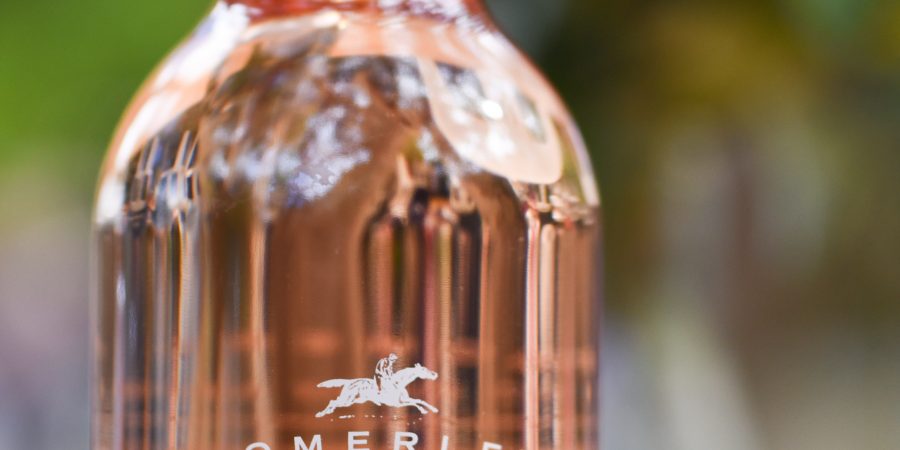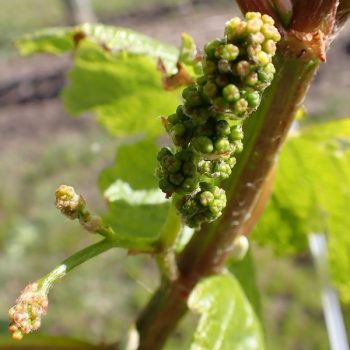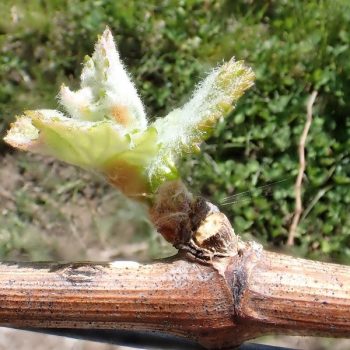A brief summary of what’s happened since we last spoke…
- The Bureau of Meteorology declared that El Niño and a positive Indian Ocean Dipole (IOD) are underway. This means that warmer and drier conditions will be more likely over spring and summer for parts of Australia. These conditions also contribute to higher fire danger. For further information have a read of this press release from the BOM.
- The vines have been enjoying the lovely warm and sunny days we’ve been having lately and are doing all the right things…
Most Advanced
E-L 14 7 leaves separated
Chardonnay at Macclesfield.
Least Advanced
E-L 9 2-3 leaves separated: shoots 2-4cm long.
Sauvignon Blanc at Lenswood and Macclesfield.
- Rob bottled three new wines! Our 2021 Shiraz and 2021 Lagrein (more on that one to come!!) along with our brand new vintage of Rosé (2023). And this time it’s made from Tempranillo!!
As the sun shines brighter and the days get longer, what a perfect timing for the Rosé to make it’s LOOOONG awaited comeback?!
In this blog post, we’ll explore the fascinating world of rosé, including the various methods of production and the diverse styles that make it such a popular choice for wine lovers.
The Making of Rosé
Rosé is crafted from a variety of red grape types. Its beautiful pink hue and fruity flavors are the result of minimal contact between the grape skins and the juice during fermentation. There are three primary methods used to create rosé wine:
1. Direct Pressing
This method involves gently pressing red grapes and allowing the juice to come into contact with the skins for a brief period, typically a few hours. The longer the skins are in contact with the juice, the deeper the color of the resulting rosé. Afterward, the juice is separated from the skins and fermented separately, producing a delicate and pale rosé.
2. Saignée Method
This method, which means “bleeding” in French, involves “bleeding” off a portion of juice from a red wine fermentation early on, typically within the first 24 hours. This juice is then fermented separately to create rosé. The remaining red wine benefits from increased skin-to-juice contact, resulting in a more concentrated and robust flavour.
3. Blending Method
Less common but still employed, this method involves blending red and white wines together to create a pink wine. However, this practice is not widely accepted in some wine-producing regions, as it’s often viewed as less authentic.
Loving our blog? Sign up for weekly updates straight to your inbox…
Styles of Rosé
Rosé wines come in a range of styles, each offering its unique flavour profile and characteristics.
Here are some of the most popular styles:
1. Provençal Rosé
Hailing from the Provence region in France, this style of rosé is known for its pale pink colour and crisp, dry taste. It often exhibits delicate notes of red berries, citrus, and a refreshing minerality.
2. Spanish Rosado
Spanish rosé wines, or rosado, are typically made from Garnacha (Grenache) grapes. They often feature vibrant acidity, bright fruit flavours, and a slightly fuller body than some other rosés.
3. Italian Rosato
Italy produces a wide range of rosé wines, from the bold and fruity to the light and crisp. Sangiovese and Nebbiolo are commonly used grapes, resulting in wines with flavours ranging from strawberries and cherries to herbs and flowers.
4. American Rosé
The United States, especially California, has embraced the rosé trend with enthusiasm. American rosé wines offer a diverse array of styles, from fruit-forward and sweet to dry and elegant, often showcasing Zinfandel, Pinot Noir, and Syrah grapes.
5. Sparkling Rosé
Sparkling rosé wines, such as those from Champagne or Prosecco, combine the effervescence of sparkling wine with the delicate flavours of rosé. They are perfect for celebrating special occasions or simply adding a touch of elegance to any meal.
We’re launching Rob’s latest vintage on Sunday 8th October!
He likes to make his using the direct pressing method and leaves it in contact with the skins for only a couple of hours to get that beautiful blush pink colour. It’s French Provençal in style, meaning it’s delicate and soft. He takes it all the way through malolactic fermentation to give it a luscious creaminess. In the past, he’s used Pinot Noir grapes, but this time around he’s made it from a blend of Tempranillo and a small amount of Pinot.
Between you and me… I can’t wait to try it!
And if you’d like to try it too, make sure you get your tickets for our launch party…
Champers with oysters & nibbles upon arrival
A welcome toast by Rob & Family
Rosé with fresh crab sandwiches & springtime bites
Heather’s fresh raspberry & chocolate pav
Plus, our Specials up for the taking until the end of the party!
$65 all inclusive
A Club Only Event by Invitation, but please do feel welcome to invite interested, non-Club friends and family ($75/head for non-Members).
Send me an email to book your spot now!


